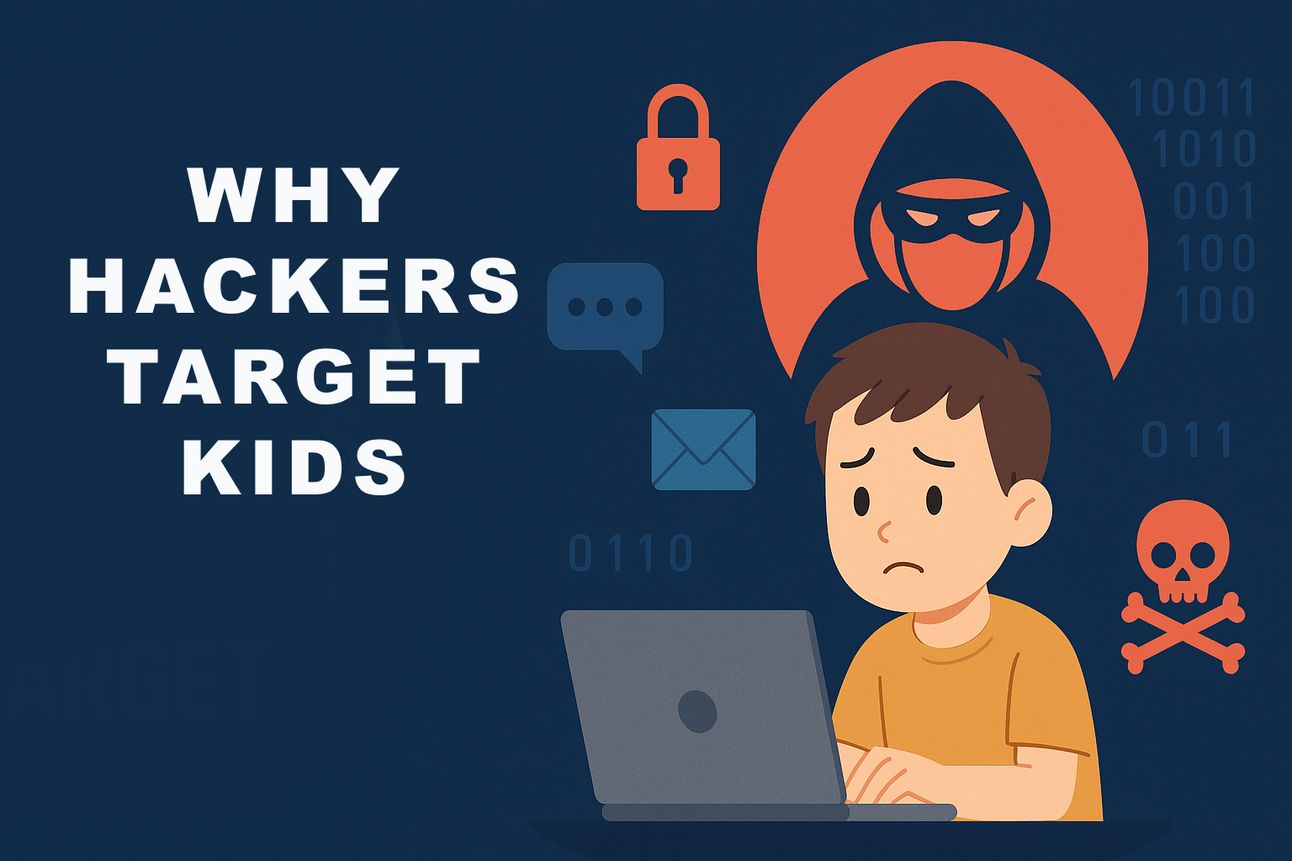- The Cyber Safety Newsletter
- Posts
- Why Your Kids Are a Hacker’s Favorite Target
Why Your Kids Are a Hacker’s Favorite Target

We like to think our kids are off-limits—too innocent, too unimportant, too protected to be of interest to cybercriminals.
They’re not.
Hackers love targeting children. Not because kids have money, but because they don’t. They have clean credit reports, unused Social Security numbers, and digital footprints that are growing—but mostly unsupervised. And once stolen, that information can go unnoticed for years.
Here’s what you need to know.
What Makes Children So Valuable to Hackers?
Most adults monitor their credit, bank accounts, and online activity. Kids don’t. That means their data is easier to steal—and far less likely to trigger red flags.
Once criminals get a child’s personal information, they can:
Open credit cards or take out loans using the child’s identity
File false tax returns to steal refunds
Create fake social media or email accounts for scams
Sell the data on the dark web to other bad actors
And because children aren’t applying for jobs, renting apartments, or opening credit cards, these crimes can go undetected until the child turns 18… or later.
The Entry Points: Where Hackers Get In
Children are growing up online—on Chromebooks, smartphones, and game consoles. These tools are essential, but they come with risks.
1. School accounts and devices
Many schools issue devices and assign email accounts, but don’t always have enterprise-level cybersecurity. A single phishing email or weak password could compromise an entire classroom.
2. Gaming platforms
From Roblox to Minecraft to Fortnite, kids chat, trade, and share in real-time. Fake “free Robux” sites, phishing links disguised as game add-ons, and scammers pretending to be admins are all common.
3. Social media
Even if your child isn’t on Facebook, they might be on TikTok, Snapchat, or Discord. All of these can be used to gather data, build trust, or exploit young users.
4. Smart devices at home
Smart speakers, cameras, or connected toys can capture private information—and many parents don’t realize these are vulnerable entry points too.
How to Keep Your Child’s Digital Life Safer
There’s no such thing as perfect digital safety—but there are practical steps you can take that make a real difference.
✅ Lock Down Accounts
Use strong, unique passwords (consider a family password manager)
Turn on multi-factor authentication (MFA) for school portals and apps
Avoid using real names or birthdays for usernames
✅ Stay Involved
Know what platforms your child is using—and how they use them
Review privacy settings together
Ask your school about their cybersecurity policies
✅ Monitor for Red Flags
Unexpected mail in your child’s name (credit offers, tax letters)
Errors in your tax return
Rejected government benefits due to duplicate filings
✅ Freeze Their Credit
Yes, you can do this for minors. It’s one of the best protections against child identity theft. You’ll need to request a credit freeze from each of the three major credit bureaus (Experian, Equifax, TransUnion) individually.
Bottom Line
Hackers don’t need your money—they just need access. And your child’s growing online life is full of opportunity.
With the right steps, you can close the gaps and protect what matters most.
Want to learn more tips for personal cyber safety? Subscribe or read past issues at:
👉 https://newsletter.thecybersafety.company
Have a topic you'd like us to cover?
📬 Email me directly at [email protected]
Until next time — stay private, stay safe.
— Peter Oram
Chief Cyber Safety Officer
FOLLOW US ON SOCIAL MEDIA


